




Quick Links:


Emergency Response, Fire Protection and Prevention and Community Engagement are the 3 service areas within KFES which combine in an integrated way to keep our community safe.
We deliver a range of services which aim to prevent fires and other emergency incidents and mitigate the impact of all risks on the KAUST community.




Our Emergency Response team are KAUST Fire and Rescue (KFR), who provide services to the KAUST Community on rolling shifts on a 365 day / 24 / 7 basis so there is always a community safety provision at KAUST.
Our response teams are headed by Captains and supported with Lieutenants, Driver Operators and Fire Fighters.

Fire Prevention activities on KAUST may include:
Explore these free materials to help KAUST fire department increase community awareness about fire safety, get fire prevention out to your friends and family, and share information about fire and other safety issues that threaten lives in your community.
Advice from KAUST Fire Department on how members of KAUST community can stay safe within their homes. We include in this guidance tips on:
Cooking is by far the leading cause of home fires and fire injuries not just on KAUST, but throughout the world.
Fire moves very fast ! You and your family may only have minutes to escape from your home. Being familiar with and practicing these 7 steps may be the difference between life and death.
In the workplace, prevention is the best form of firefighting – here's how to reduce risks, keep compliant and champion fire safety at work.
E - Bikes and scooters are increasingly popular throughout the world. Lithium-Ion batteries are usually the source of power and if not used correctly, these batteries can catch fire and / or explode. These are some important safety tips to keep in mind when charging or storing these devices. We believe that the most effective firefighting technique is prevention. Learn more about fire safety at home and work.
Do you know how you would escape in an emergency?
Here you can find out more about how to make an escape plan, and where to get help and extra support if you need it – this is especially important if you (or someone in your home) might find it difficult to escape quickly without assistance. What is an escape plan? In a nutshell, it’s the plan that could save your life in an emergency. In a smoky, scary atmosphere, it’s easy to freeze, panic and become disorientated. By planning and practicing how you will escape with the whole family, you can be more confident about a safe escape.
We believe that the best way to keep our community safe from fire is to help you understand common risks and reduce them in your home. Here are some of our firefighters' top tips to keep you safe.
Do you know how you would escape in an emergency?
Here you can find out more about how to make an escape plan, and where to get help and extra support if you need it – this is especially important if you (or someone in your home) might find it difficult to escape quickly without assistance.
What is an escape plan? In a nutshell, it’s the plan that could save your life in an emergency. In a smoky, scary atmosphere, it’s easy to freeze, panic and become disorientated. By planning and practicing how you will escape with the whole family, you can be more confident about a safe escape.
Before you head off to bed, some simple fire safety checks can save your life. Here's what to keep an eye out for. Simple checks before you head for bed. Last year, many of the fires we attended were at night (between 9pm and 9am). So, before you go to bed, it's really important to make some simple checks. These will only add a couple of minutes to your day but will significantly reduce your risk of a fire. A good routine can save your life – but an early warning is important too. We worry more about fires at night as you are likely to be sleeping, so get less warning to escape. That's why it's really important to check working smoke or heat alarms in rooms where a fire could start. Your smoke alarms should wake you if a fire does break out, but you can further reduce your risk by carrying out these simple checks before you go to bed.
Advice from KAUST Fire Department on how members of KAUST community can stay safe within their homes. We include in this guidance tips on:
Around 60% of fires in the home start in the kitchen, but it's easy to enjoy cooking more safely with a little planning and awareness.
With bubbling pans, open flames and maybe a little one or a pet underfoot, kitchens are potentially dangerous places. Here are our top tips to reduce fire risks:
Fires involving lithium batteries are the fastest growing fire risk in our world. Whilst E-Bikes and E-Scooters offer a great way to get around KAUST, if the batteries become damaged or begin to fail they can start incredibly ferocious fires. Lithium battery fires can spread quickly out of control, and within minutes have started a larger fire.
When these batteries are charged in communal areas or escape routes, a fire breaking out can quickly block people’s ability to escape.
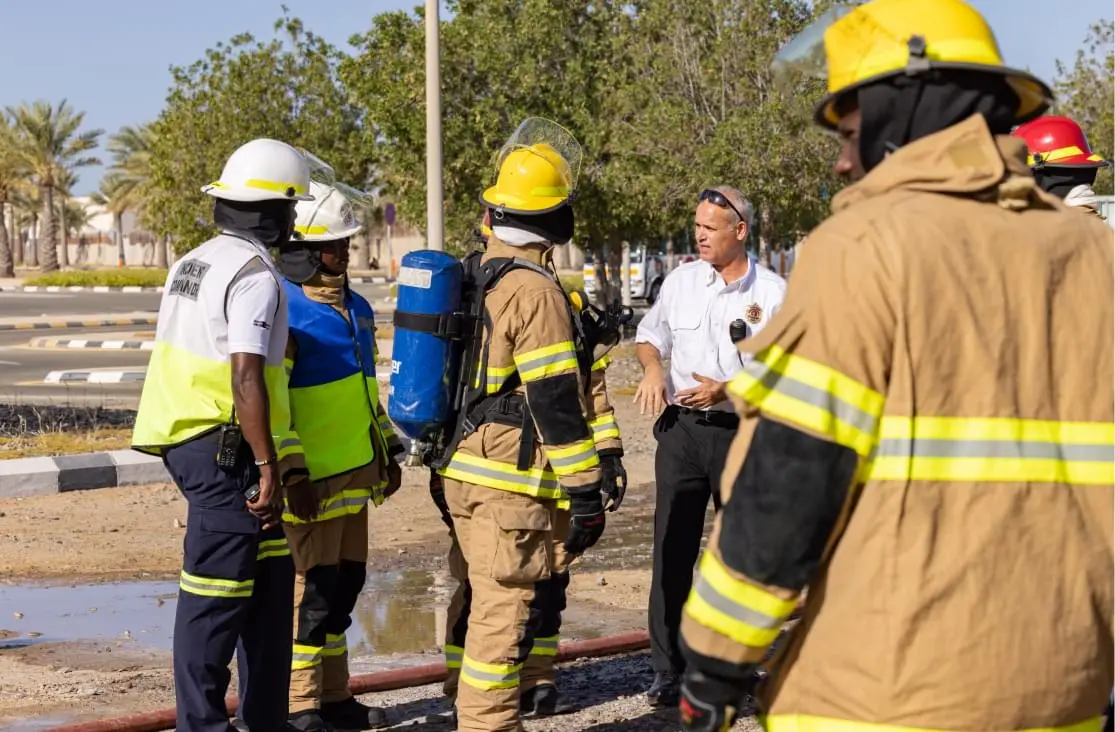
Before a failing lithium battery catches fire, there are often a few warning signs. If you see any of these signs. you'll need to take immediate action to stay safe and reduce the risk of fire.
How can you reduce the risk of fire when you charge an e-bike or e-scooter? There are a number of ways you can reduce the risks when charging lithium batteries:
If your battery shows any of these signs of failing, immediately turn off the device and unplug it from the power source. Call the device manufacturer or retailer for further instructions.
If the device starts smoking or catches fire, raise the alarm, get out, stay out and call 999 immediately. If you’ve spotted the warning signs, make sure you report your faulty battery to your local Trading Standards office.
Lithium batteries should not be placed in the same bins as your regular rubbish or recycling. If they overheat, they may cause it to catch fire. Instead check your local authority's website for the safe way to dispose of lithium batteries in your area.
KAUST Fire station is a community asset, and we love to welcome all of our wider community into our inclusive team environment.
Our team members constantly train to international best practices to ensure operational readiness, supervised by internationally recognized trainers working in state-of-the-art facilities.
KAUST Fire and Rescue works with internal and external stakeholders to provide outreach and add value to the Kingdom through its partnership working and collaboration with Civil Defense and Petro Rabigh, amongst other organizations.
KFR boasts state-of-the-art training facilities that offer many opportunities including but not restricted to:
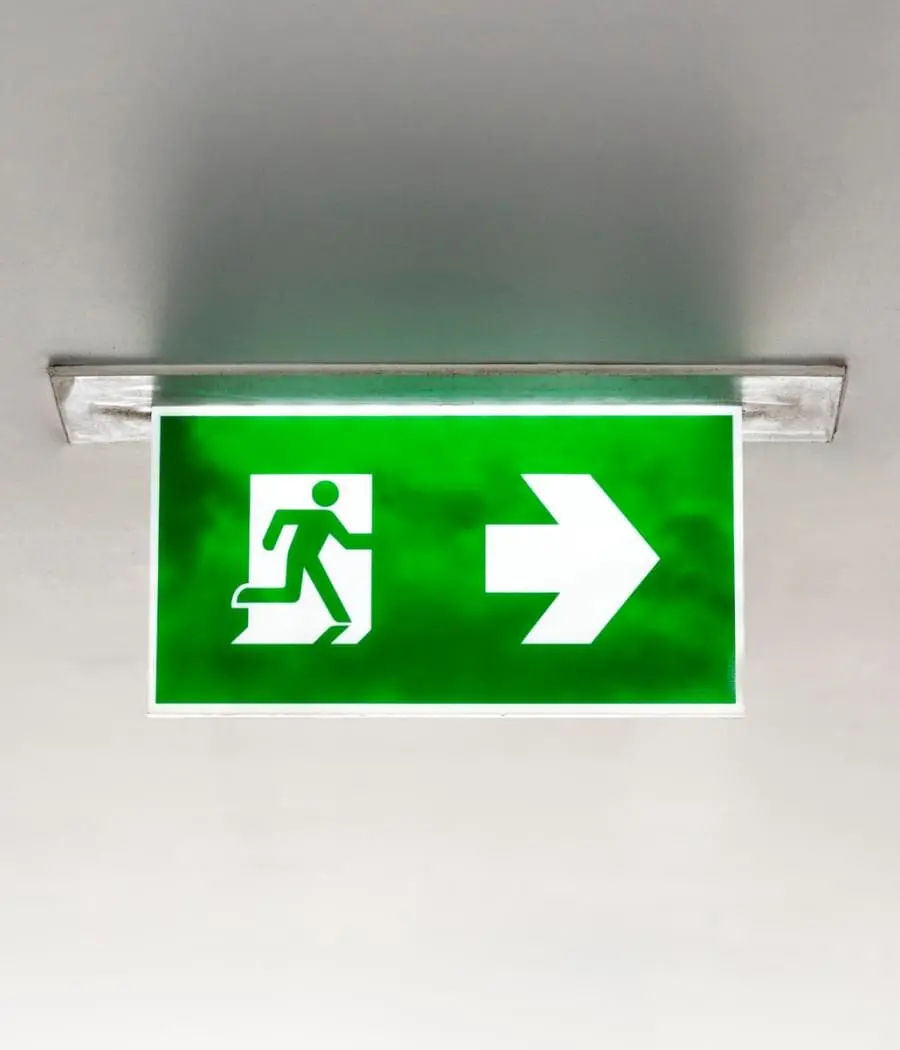
To provide you with the necessary plans, procedures, training and equipment for the safe and efficient evacuation of premises in the event of an Emergency Evacuation at work.

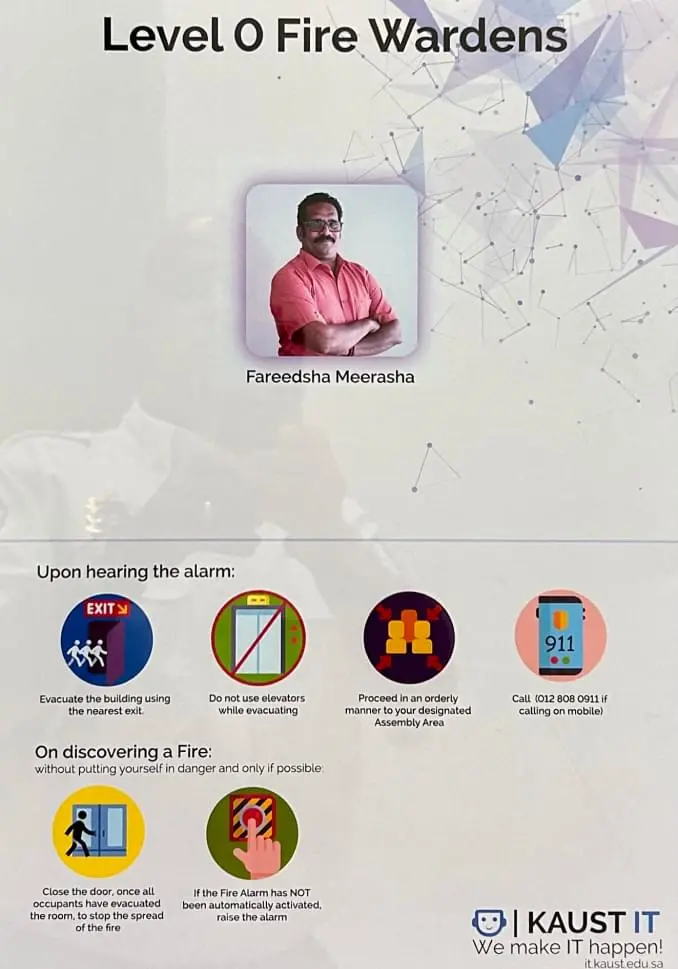
To provide you with the necessary plans, procedures, training and equipment for the safe and efficient evacuation of premises in the event of an Emergency Evacuation at work.
Fire Warden training course is offered to nominated persons and facilitated by KAUST Fire Department.
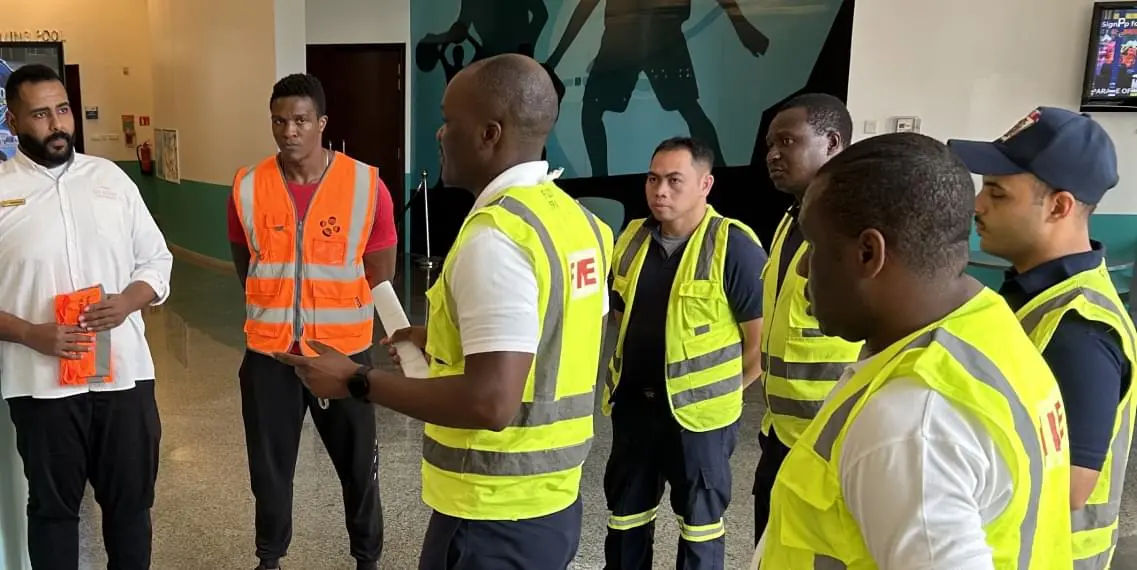
The course length will be approximately 3 to 4 hours dependent on class size and is held at KAUST Fire departments training facilities.
This is an assessable course. You will be assessed during and after the training, including with 20 questions in a written test. A score of 15 or better and full completion of all of the training elements will facilitate a pass and the student can then receive the training certificate.
Students who pass the course will receive a Fire Warden vest either on the conclusion of the course or within a short period of time, dependent on resources.
Welcome to the Fire Extinguisher training course, which is offered to community members and facilitated by KAUST Fire Department.
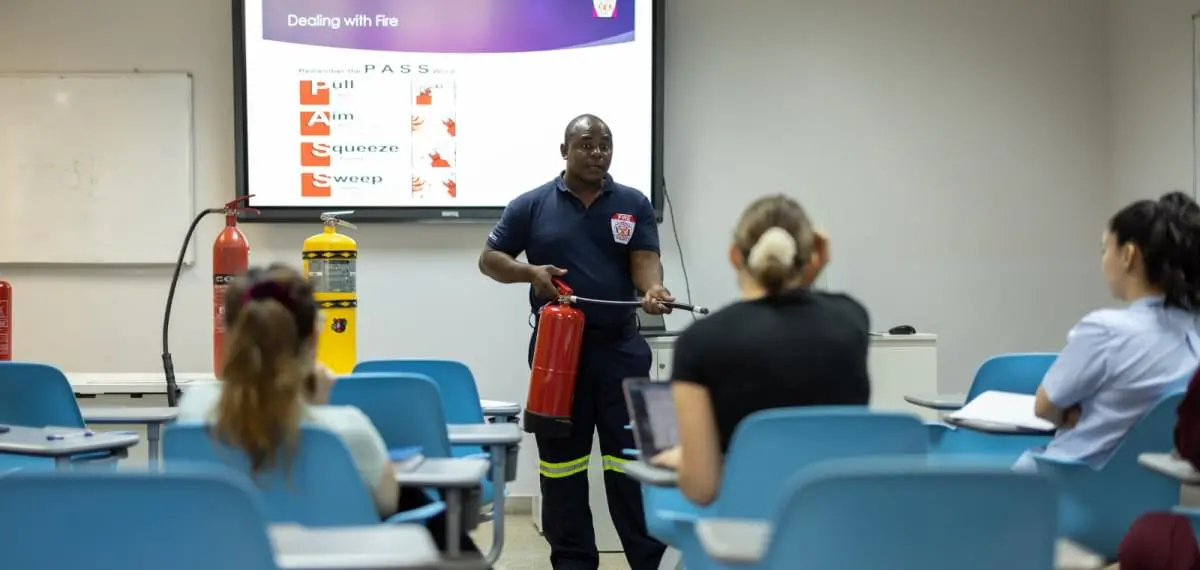
The course length will be approximately 2 to 3 hours dependent on class size and is held at KAUST Fire departments training facilities.
This is an assessable course. You will be assessed during and after the training, including with 20 questions in a written test. A score of 15 or better and full completion of all of the training elements will facilitate a pass and the student can then receive the training certificate.
This training course does not currently have a refresher element, this can be achieved by in house training.

Have questions please email fire.captain@kaust.edu.sa